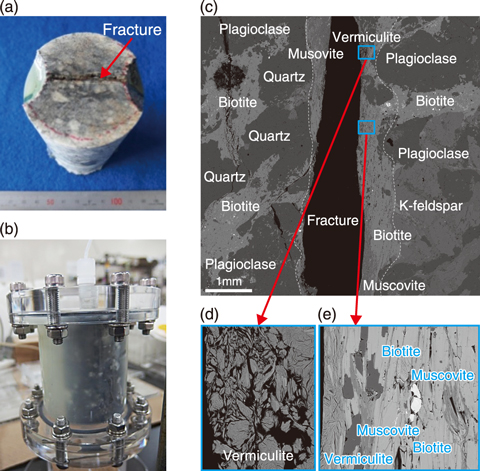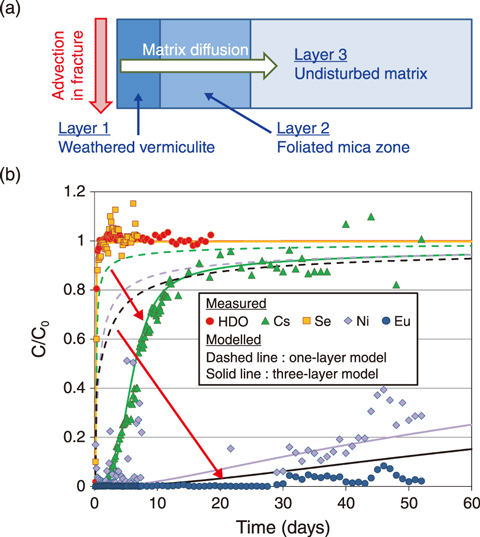
Fig.8-25 Experimental setup and EPMA observations

Fig.8-26 Measured and modeled breakthrough curves
Crystalline rocks such as granites have been investigated as potential host rocks for the geological disposal of radioactive waste in many countries. Radionuclide (RN) transport in fractured crystalline rocks can be conceptualized by a dual-porosity model where RNs are transported by advective water flow through a fracture and diffusion into the surrounding rock matrix. Fine-scale alterations found around fracture surfaces are key uncertainties that need to be considered when developing transport models for fractured crystalline rocks. This work therefore focused on developing a comprehensive approach coupling laboratory tests, microscopic observations, and modeling to understand and quantify tracer transport processes occurring in natural fracture surfaces, using a single-fractured granodiorite sample from the Grimsel Test Site (GTS) in Switzerland.
Laboratory tests coupling flow-through, through-diffusion, and batch sorption were conducted using synthetic groundwater including five tracers with different retention properties: HDO (deuterated water), Se, Cs, Ni and Eu. A flow-through tracer test was carried out at a constant flow rate using a granodiorite sample containing a single natural fracture (Figs.8-25(a) and (b)). Through-diffusion and batch sorption tests were also conducted using the same tracer solution for two different samples taken from a natural fracture surface and from a matrix part. These test results indicated that tracer retention was consistently in the sequence of HDO ≈ Se < Cs < Ni < Eu. Heterogeneities in the mineral and pore distribution around the fracture were clarified by coupling X-ray computed tomography (X-ray CT) and electron-probe microanalysis (EPMA). Heterogeneous mapping of the fracture apertures was visualized and evaluated using X-ray CT images. By comparing the elemental maps from EPMA and the chemical composition of primary minerals, heterogeneous mineral distributions were identified, indicating a foliated mica-rich zone near the fracture surface and a weathered vermiculite zone at the outermost surface (Figs.8-25(c)-(e)).
Based on these microscopic observations, a three-layer model including weathered vermiculite, foliated mica, and undisturbed matrix layers (Fig.8-26(a)) and their properties such as thickness, porosity, sorption, and diffusion parameters, obtained from laboratory tests, provided a better interpretation of the breakthrough curves of all tracers, measured in flow-through tests, than either a one-layer model assuming only an undisturbed matrix corresponding to a traditional dual-porosity model (Fig.8-26(b)). Mechanistic understanding and detailed modeling considering the effects of fine-scale surface alteration around a natural fracture will improve the safety assessment of fractured crystalline rocks.
This study was partly supported by the Agency of Natural Resources and Energy (ANRE), the Ministry of Economy, Trade and Industry (METI), Japan.